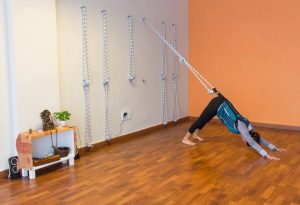In this Article
A longitudinal lie is a position assumed by a normal baby before labour. A transverse baby position, on the other hand, is when the baby lies across the stomach with her head facing away from the birth canal. As this interferes with the delivery, different techniques are used to correct a transverse lie position. Keep reading for everything you need to know about this position.
What is a Transverse Lie Position?
If you can’t feel your baby’s head near the pelvis when the abdominal region is palpitated, and feel it in one of the flanks, your baby is in a transverse lie. A transverse lie is a position in which the baby lies sideways. This makes a vaginal pregnancy impossible. In most of the cases, a C-section is recommended. If a transverse lie position is diagnosed late during the pregnancy, the chances of the baby staying in that position until birth are high.
Causes of the Transverse Lie Position
There are many reasons why babies assume the transverse lie position. The most common ones are:
- An abnormal amount of amniotic fluid in the womb
- Being pregnant with twins
- Flexible abdominal muscles, which make it easier for the baby to move around in the womb
- Malformations of the uterus or obstruction of the birth canal due to some reason
Diagnosis of the Transverse Lie Position
The doctor can tell the position of the baby by placing her hands on the abdomen in a series of movements. This is known as Leopold’s Maneuvers. She may also request an ultrasound exam to confirm the position of your baby. Typically, the position of the baby is not a concern until the last trimester of pregnancy.
Types of Transverse Lie Position
There are three commonly identifiable transverse lie baby symptoms or presentations in mothers. They are-
- Left-Shoulder Presentation – This is when the baby’s left shoulder faces the birth canal. What makes this dangerous is the cord may prolapse and leave the birth canal before the baby leaves, thus, making pregnancy impossible in this position.
- Right-Shoulder Presentation – When the baby’s right shoulder faces the bottom of the uterus, then that’s a right-shoulder presentation. The baby’s head can face either side in this presentation, and the position needs to be changed, or else, mothers have to go through a caesarean.
- Back-Down Presentation – If your baby lies on her back with neither shoulder facing in the direction of the birth canal, then that’s a back-down presentation. This position makes it impossible for labour to move forward since there’s no way the baby can exit in this position.
Complications Arising From a Transverse Lie Position
When your baby is in the transverse lie position, the complications or transverse lie baby risks that arise are:
- Poor oxygen and blood supply due to umbilical cord prolapse. This can result in the death of the baby.
- Since the baby can’t pass through the vagina in such a position, a C-section will be required.
- Prolonged labour can lead to infections.
What If You’re Pregnant With Twins?
In case of twins, if the second twin is in transverse position then there are chances of vaginal delivery, as the uterine contractions change the position suitable for vaginal delivery. However, it may not be true in every case. In such a scenario, a cesarean may be needed, especially if the baby is big.
Professional Help for a Transverse Lie Baby
If exercises and natural remedies fail, then it’s time to turn to some professional help. Here’s what you can do If there’s no success after 37 weeks of pregnancy, consult your midwife about doing an External Cephalic Version procedure.
Pregnancy is often fraught with risks to the mother as well as the baby. Having a baby lying in the transverse position can surely worry mothers. But in most cases, certain medical techniques prove useful in getting the baby to assume the head-down position.










